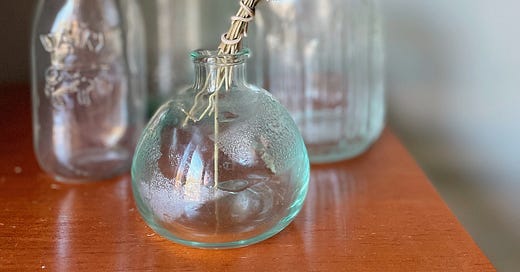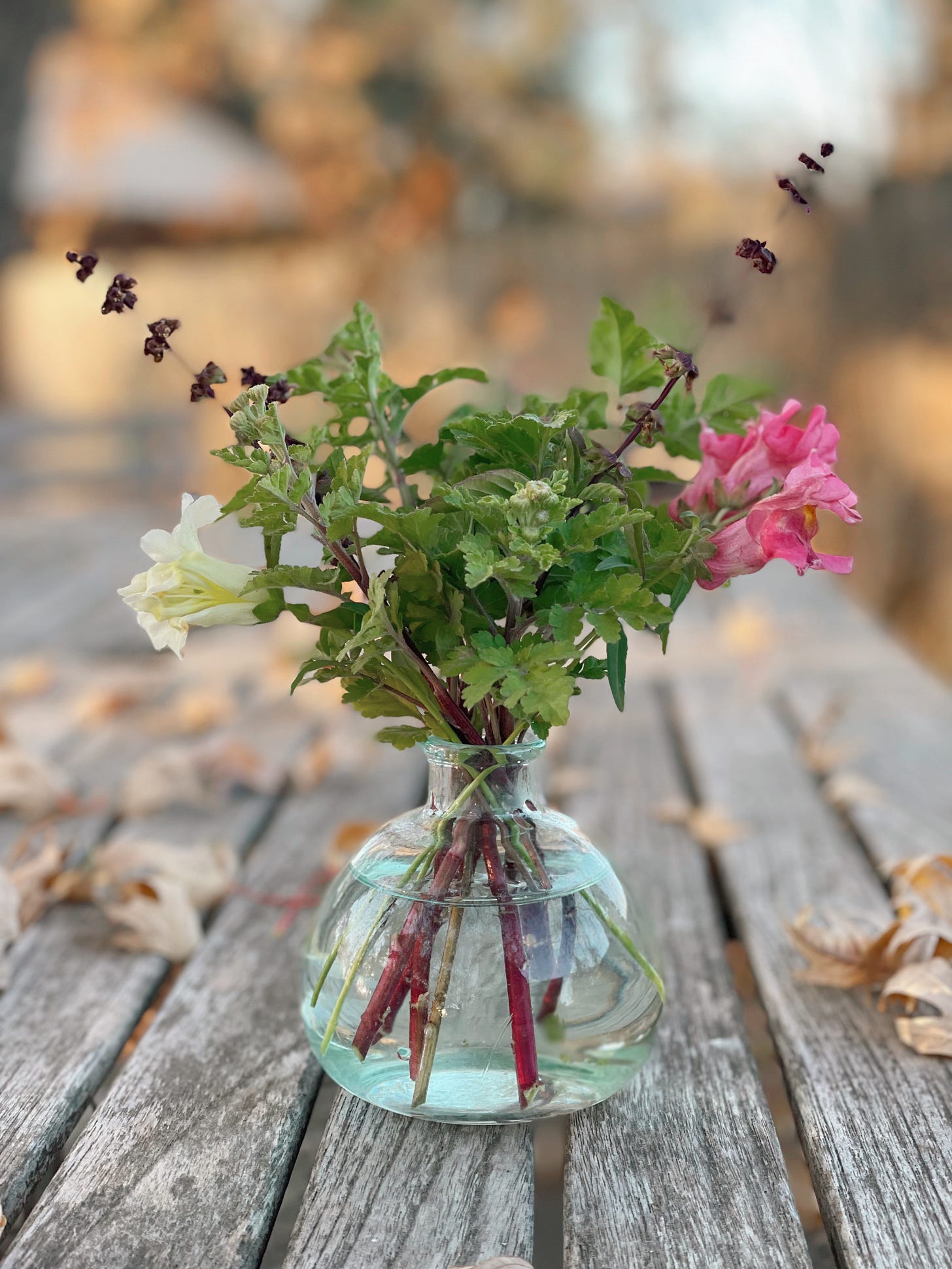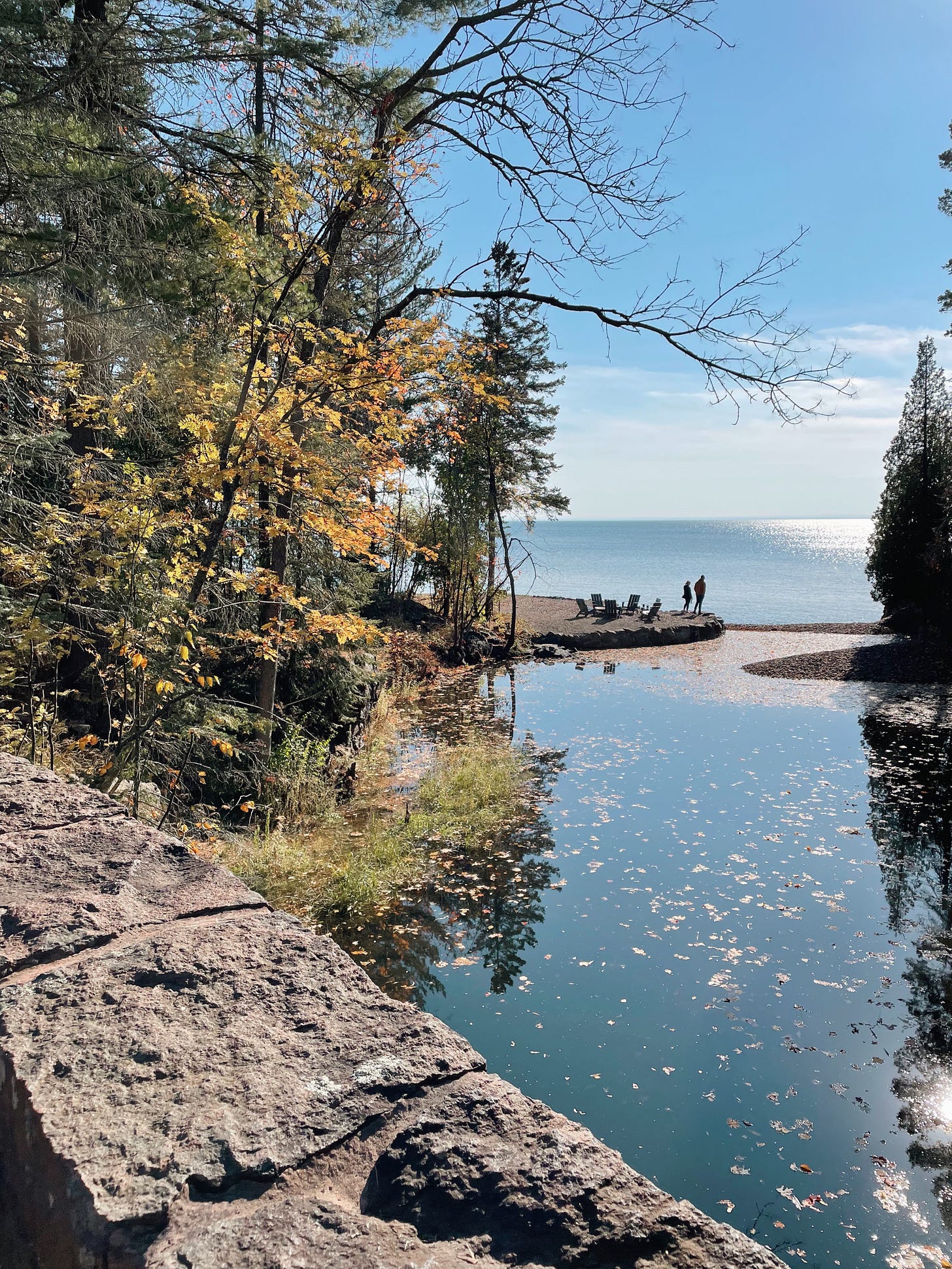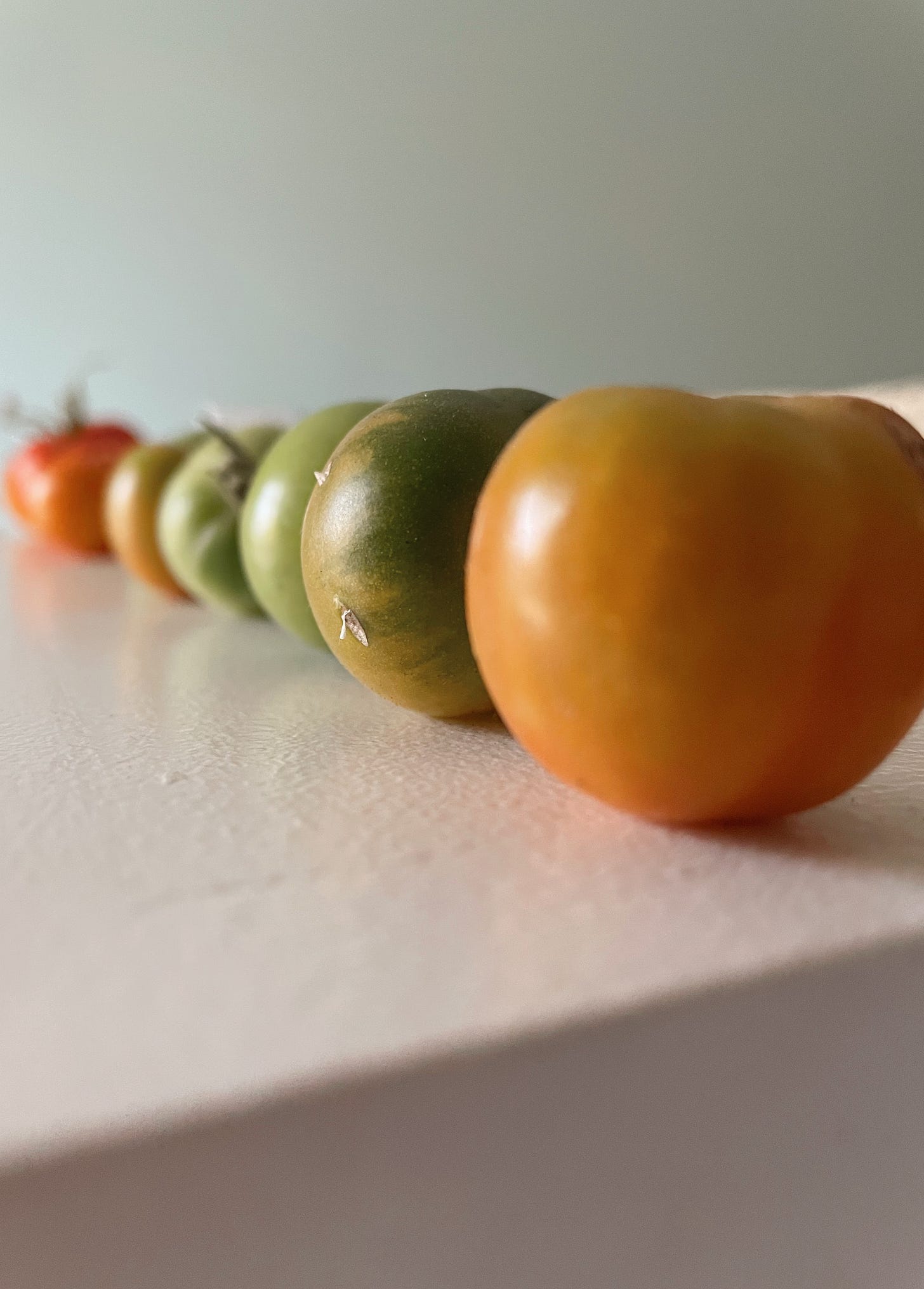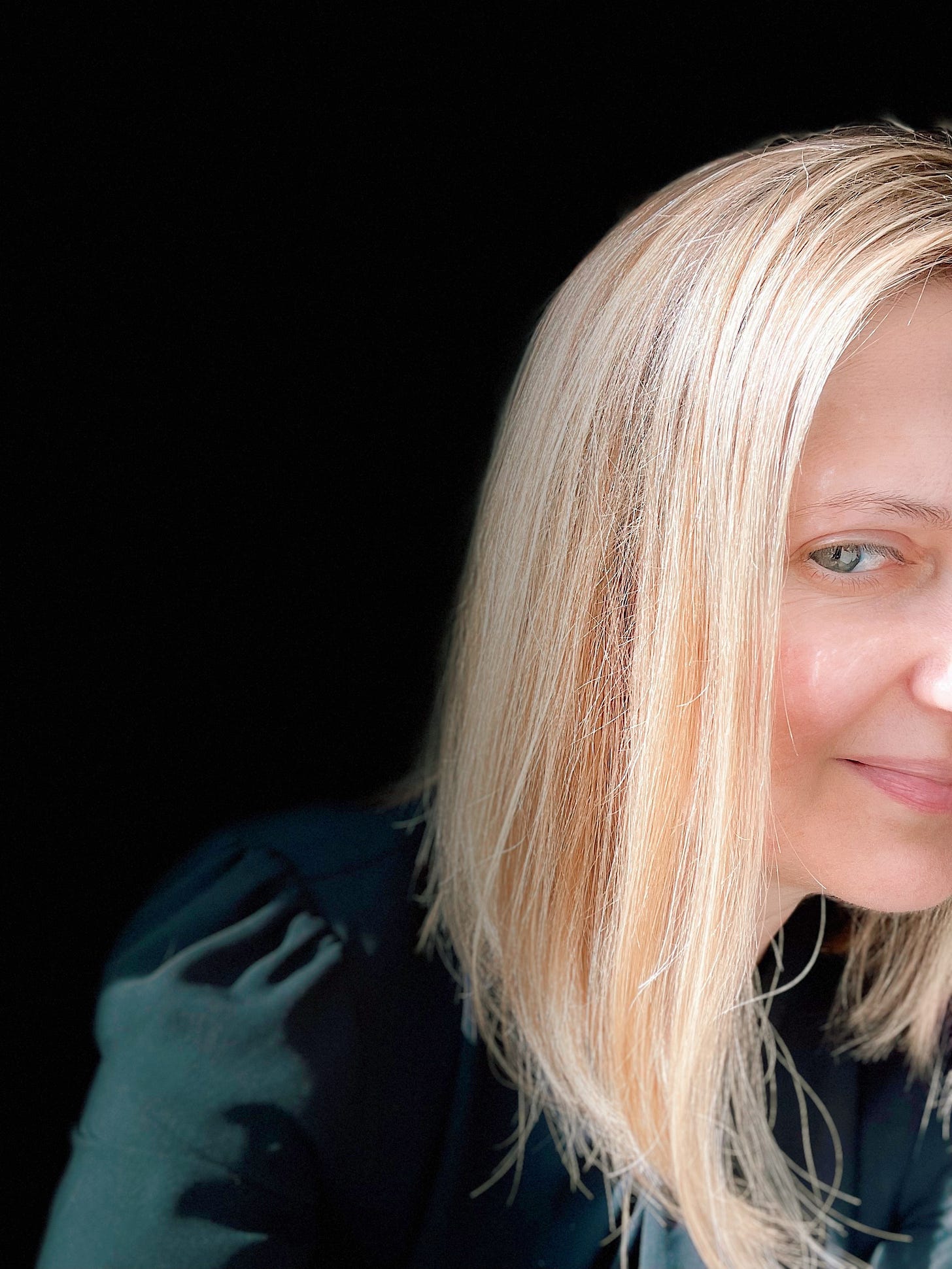Almost
The left overs. The dreamers. The perpetually behind. The optimists. The hopeful. Whatever you may call them, the flower garden dawdlers, the dwellers that promise to hold a little longer to the season’s end, they pay no mind to shifts in daylight.
I collected left-behind blossoms in the kitchen and cut gardens today. I didn’t intend to harvest them. They are worn, fragmented, and a little scraggly. But then I considered their determination to keep going, to keep blooming, as evidence of possibility. Call these late-bloomers what you may — they are the ones that dare to continue. I pocketed their reminder to keep going, keep blooming, even when conditions are less than perfect.
As I walked back to the house with my fist full of flowers at the edge of their fullest blossom, I thought about the word almost. Almost: does it mean not quite there, as in a missed opportunity, or very nearly there, as in not yet, but soon? I know the ending to the story for these feverfew, basil, snapdragon. Cold weather and pressure from decreased daylight means they will almost fully bloom, but not quite.
I plucked them all the same, because isn’t their nearness to fullness still worth celebrating?
I too have waited in the space of not yet, but soon. Oh, to handle those moments with the same care I give a fully emerged flower head, to place each encounter lovingly in a glass bud vase and call it experience.
The morning light creeps in later each day. Its arrival, sleepy and delayed, reminds me of days when I don’t want to leave the comfort of my warm bed. I start tentatively.
Evening sunset arrives earlier too, like rushed birds, swarming together and flying away as a group. Their escape to warmer climates is admirable.
We call autumn a shoulder season. It sits between the head of summer and the body of winter, when the thrum of wildlife gives way to implacable quietude. You can hear everything in a winter’s silence.
I think of autumn as a perpetual state of almost. Plants die back. Trees let go of leaves. Birds migrate south. Nature prepares for slumber. We’re almost to the end of the year. We’re about to move toward more darkness. We’re nearly to spring, when growing season begins again.
Still, in autumn I find vignettes of juxtaposition all around me. Zinnias turn brown with decay, but tomatoes continue to ripen from green to red. Abundant scenes of snow-capped blossoms and iced leaves stretching across the yard are not unheard of, even in early November. Orange calendula and yellow rudbeckia, some of the last blossoming survivors of a late-season garden, can bravely carry bundles of snow in their frigid petals. I think of all we carry during the last months of the year: expectations, memories, regrets, hopes, anticipation.
Last year, snow fell in November. A virtual sound scape of winter greeted me as I trudged down the gradual slope toward the gardens: icy snow crunched under my feet with each step, wind chimes sang their familiar tune in the far-off distance, and birds chirped, albeit hesitantly. The season’s first blanket of snow, disbursed evenly across the kitchen garden beds, adorned cover crop and lettuce varieties still alive in the cold November soil. What was once verdant and lush now appeared monochromatic and muted. Snow in November is almost a given: not yet, but soon.
And every year I spend late autumn days sketching out next year’s garden beds, maybe as a safe way to account for all my intended plants, or maybe as a way to capture an almost garden — a pending future in which all plants reach their fullest growth.
Yes, I have decided autumn is rich with promises of soon to be. No missed opportunities here, only eyes fixed forward to what comes next.
Thanks for reading this month’s newsletter. See you back in late November.
-Betsy
Know people in your life who would enjoy flower photography and long-form essays about gardening? Share Roots & Vines with them.

